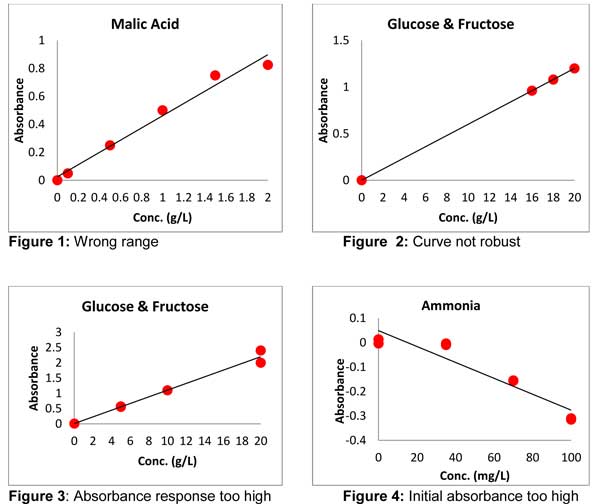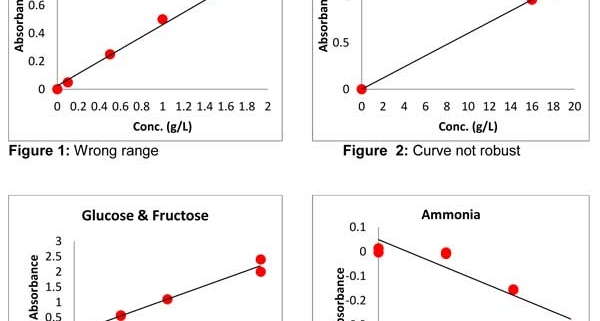Tip: Troubleshooting enzymatic calibration curves
With an increasing number of labs upgrading from benchtop spectrophotometers to automatic discrete analysers for their enzymatic testing, it is worth noting that the major difference between the two approaches (apart from speed!) is in the calculation of the sample results.
A discrete analyser calculates a calibration curve from a series of known standard solutions. In order to calculate a sample result, the sample absorbance response is quantified against the calibration curve.
If the calibration curve isn’t robust, then the sample results will be innacurate. It’s worth looking out for some tell tale signs that can appear in the calibration curve so that you can identify any issues early.
Here are a few examples of things that can go wrong with calibration curves. If you are noticing any of these problems in your calibrations, contact Duane for advice on how to solve the problem.



